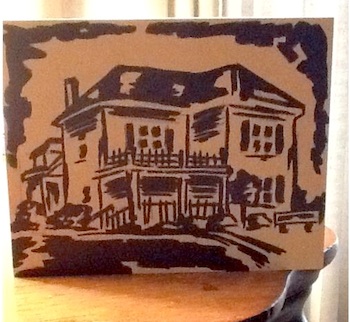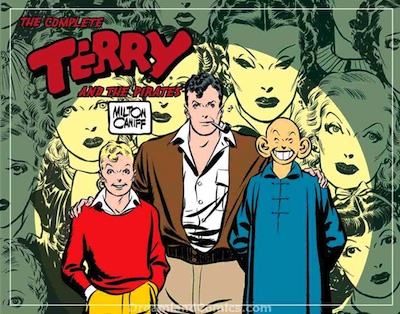Full House
By Hope Wallace

On Wednesday evening, I was climbing up the stairs from the classroom in the basement. The first session of our Beginning Drawing class filled the downstairs classroom with participants of all ages. It was rewarding to see that mix of people pursuing creative outlets. As I was climbing the stairs I realized that the Wassenberg Camera Club was having their meeting in the large, main gallery and in the front gallery our LineArt Initial class was just getting under way. The building was entirely filled with people having fun, learning new techniques and exploring their potential. I wouldn’t have wanted to be in any other situation at that moment and it was great to see the Wassenberg Art Center working at capacity.
Our current show, the 34th Annual Photography Exhibit, continues through October 28 and continues to be amazing. We have a treasure hunt designed for kids of all ages to find hidden items in the photographs. If you haven’t had a chance to see these works, please stop by.
We’ve added a second round of Beginning Oil Painting classes with Sally Geething. Students often complete a landscape painting or two in one evening. From the sound of the laughter, it’s proving to be a good time.
The Beginning Printmaking class with Matt Temple starts Wednesay evening. We still have some openings and this class is going to explore different ways to make prints with traditional linoleum-type carving and a whole bunch of non-traditional ways to create prints from items readily found products around the home. Beginning in November we will have a three-part class on dying/hand-painting real silk scarves, just in time for the holidays to give as a gift or to keep. Linda McCann will be the instructor. Check our website, wassenbergartcenter.org or simply give us a call at the number below for further class offerings and details.
Don’t forget, bring us your dinosaur! If you are age 5-18 you can draw a picture (image in last week’s edition) of a T-Rex for a chance to win a free any size/any kind pizza from Pizza Hut.
The deadline is November 1 and winning drawings will be featured in the Times Bulletin.
Contact the art center at 419.238.6837 or via wassenberg@embarqmail.com. The Wassenberg Art Center is located at 643 S. Washington St. in Van Wert. Visit the website at wassenbergartcenter.org.
Milt Caniff and “Terry and the Pirates”
By Kay Sluterbeck

Milt Caniff (1907-1988) was unique among American cartoonists of his time because he had a college education. Caniff attended Ohio State University, graduating in 1930. During his time at OSU, he studied drama and acted in plays. These activities helped shape his comic strips, which included “Terry and the Pirates” and “Steve Canyon,” because he realized early that the essence of drama was conflict. Acting is also the craft of making emotions visible, and the comic strip is a visual medium.
Another influence came from books. From his youth, Caniff was a voracious reader. He loved the adventure tales of Robert Louis Stevenson and the drama of Somerset Maugham. He learned from these literary passions; many of his comic strip characters pay homage to the famous characters of literature, notably “Burma” who harks back to Miss Sadie Thompson of Maugham’s story “Rain.” Even his character “Terry Lee” has a hint of Stevenson’s Jim Hawkins as he heads off for Treasure Island in the company of pirates.
Caniff began by drawing a few forgettable strips of his own, using a cartoony style. Then a friend advised him that instead of doing “kid strips” he should “write the strip for the guy who buys the paper.” Caniff’s “Terry and the Pirates” debuted on October 22, 1934. For the next twelve years, this comic strip wove a spell of adventure, exotic locations, sex appeal, and humor that kept readers anxious to see the next installment. Caniff’s unique style used a brush rather than a pen, and featured rich, bold blacks and strong highlights done in an almost impressionistic technique, ignoring small details. His work had enormous visual impact among the comic strips of his era.
In this strip, Caniff created a repertory company — a group of traveling players who came into the story, performed in high drama, and vanished — to return months or years later. He made these players adventurous, resourceful, and unconventional. Along with the main characters — young Terry Lee (who grew older as the strip progressed) and devil-may-care adventurer Pat Ryan — his players included the beautiful pirate La Choi San, known as the Dragon Lady; Burma, a tough but lovely lady who drifted around Asian ports of call making her living as a singer. Burma could be heartless, but she was also capable of great generosity (although she wouldn’t admit it).
Caniff knew that you can’t have great heroes without great villains, and he was equal to the task of creating them: Evil smugglers, pirates, and murderers abound. But they have surprising character traits. We get glimpses of the events that shaped them and turned them bad. For example, “Tony Sandhurst” is not a warlord, a killer or an arms smuggler; he is a member of an upperclass English family who lost their fortune during the depression. He manages a plantation on the China coast, oppressing his workers and treating his wife not much better. Sandhurst’s nasty streak is evident from the beginning; he enters the strip sneering, lighting cigarettes one after the other with a fancy lighter. With just these few clues, Caniff lets us know that this is a bad man to deal with.
“Terry and the Pirates” became a roaring success. The strips were collected into books, setting the stage for today’s graphic novels. Possibly the surest sign of the strip’s popularity came in November 1937 when “Terry and the Pirates” debuted as a radio show playing three days a week, with Bud Collyer (later the voice of Superman on radio and cartoons) as Pat Ryan and Agnes Moorehead playing the Dragon Lady.
When “Terry” finally came to a close, Caniff went on to more fame with the military newspaper strip “Male Call” and again in national newspapers with “Steve Canyon.” His contributions to the art of comic strips, graphic novels, and storytelling will be acknowledged as long as interest in the classic comic strip endures.
POSTED: 10/19/11 at 1:21 pm. FILED UNDER: What's Up at Wassenberg?







